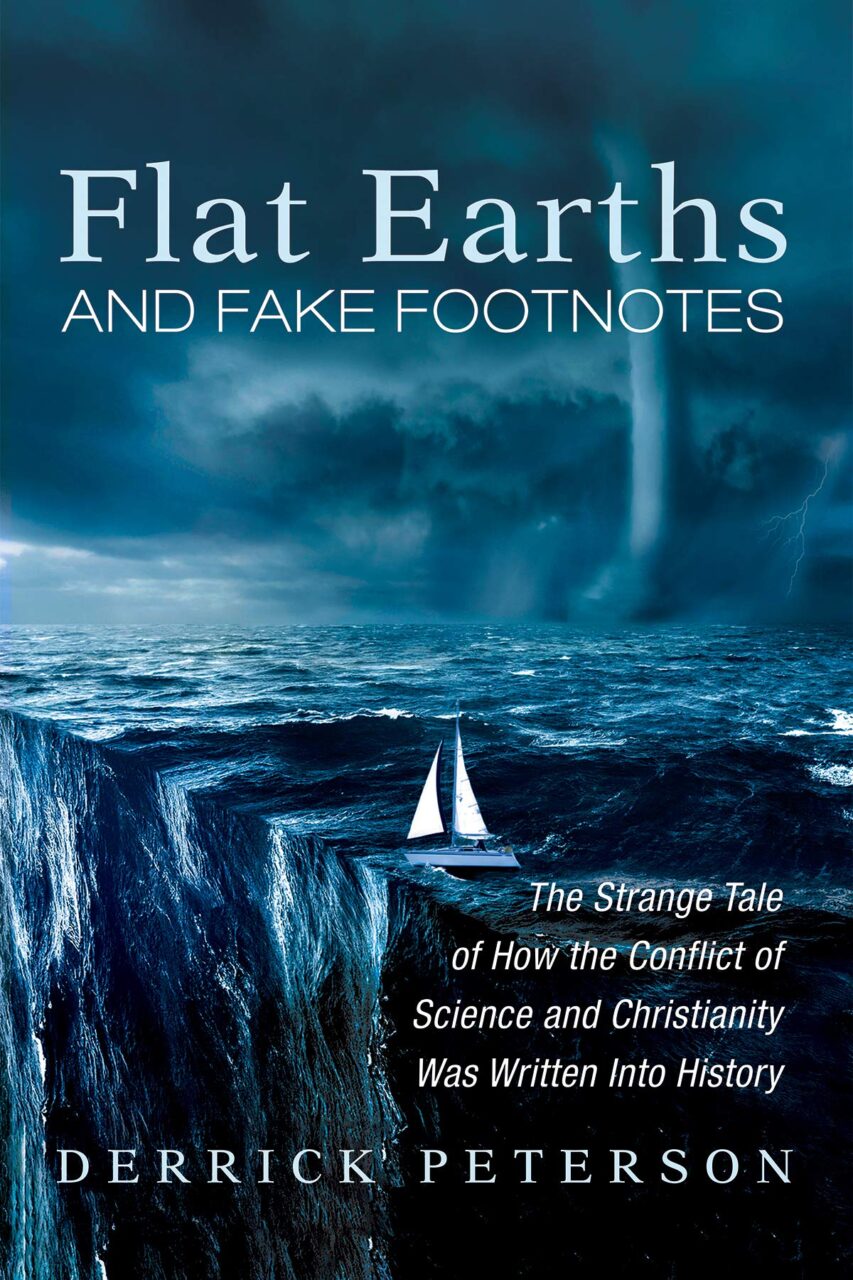Book Review by Robert Brennan
Flat Earths and Fake Footnotes: The Strange Tale of How the Conflict of Science and Christianity Was Written into History
By Derrick Peterson
Cascade Books, 2021; 378 pages.
ISBN 9781532653339, 1st edition, paperback
AUD$74
Derrick Peterson is described as an adjunct professor at Multnomah University and Seminary in Portland Oregon. He is a writer with several science- and religion-related articles at http://agreatercourage.blogspot.com/.
This book is another which contributes to the growing collection of works that revises and demolishes the myth of the warfare of science and religion. Peterson’s style is easy reading, detailed, and at times ironic and humorous. This book can be read by any interested lay reader, although the detail and research will be useful to academic readers.
In the first part of the book, Peterson traces important developments leading to the dominance of the warfare myth (also known as the Draper–White thesis, following the works of Andrew Dickson White and John William Draper). He demonstrates the breadth of myth-shattering information, tracing the rarely reported backgrounds to well-known incidents.
He follows the deletion of theology from early-modern discourse to the rediscovery of the Christian contribution to the development of science in the work of Pierre Duhem, the influence of Comte’s logical positivism and eighteenth-century French secularism through to the fall of logical positivism in the mid-twentieth century.
The second part re-examines these contributions to the rhetoric of Huxley and the X-Club, and to the writings of White and Draper and their promotion by Edward Youmans in Popular Mechanics.
The third part begins with a titular chapter that discusses many reported examples of supposed support for a flat earth and the misleading trails of references and footnotes used to give these stories false legitimacy. It then discusses the way that the contributing stories to the myths are not actually supported, by highlighting either the non-existence or misrepresentation of documents. Peterson lists many such examples across medieval sciences. To illustrate this from Peterson’s pool of examples of the distortion of document historiography are the papal bulls quoted by White that purport to show the church’s opposition to medical dissection. The first example, The Church Abhors the Shedding of Blood, does not exist. The other, Of Detestable Cruelty, while actually existing, refers to the late-thirteenth-century funeral practice of cutting up a corpse and boiling off the flesh in order to make transport of the remains easier.
Careful examination of the evidence behind the myth-builders’ historical allegations commonly shows that reality does not match the propaganda. The supposed denunciation of Andreas Vesalius by the Inquisition for dissection was actually for cutting open someone “who—unhappily—was still quite alive” (p. 246).
Peterson is similarly convincing about debunking treatment of the myth of the dark ages, the supposed flat earth, the church’s alleged opposition to heliocentric theory, the burning of the library at Alexandria, and church opposition to Darwin.
Peterson revisits the infamous 1860 Huxley–Wilberforce debate in the recollections of the actual keynote speaker of that meeting of the British Association for the Advancement of Science, John William Draper. Peterson cites the recent discovery and publication of Draper’s letters by ISCAST fellow James Ungureanu. These were written following the meeting. Huxley’s contribution to the evening was so forgettable that Draper does not even mention him.
Peterson recites a litany of examples of agenda serving the rewriting of, and outright fabrication of, events. Ironically, much which began as anti- established church rhetoric later became fuel for atheistically driven deletion of Christian influence. Peterson writes of a contemporary example, that of an education text: “A world history textbook left out the Protestant Reformation. The fate of religion appears to be warfare or deletion; often both simultaneously” (p. 317).
Trails of false footnotes are detailed. For example, White cites the Columbus tale: Columbus standing firm against vigorous flat-earth opposition by a Grand Cardinal of Spain. White cites Irving (Rip van Winkle) who is “having a laugh, hardly bothering to cover up his ruse. He (Irving) is, in essence, saying with this fake footnote: ‘somewhere in the French royal library there are unnamed, unspecified documents which totally support my story’” (p. 191).
Peterson is widely read and refers to important recent work in the field. The reader may regret the content that Peterson has left out of this volume. Nevertheless, what he has included is well worth absorbing.
In summary, this book is good value, worth reading, and an excellent addition to the study of the development of the warfare myth. It is to be hoped that it will contribute to that myth’s worthwhile demise.

